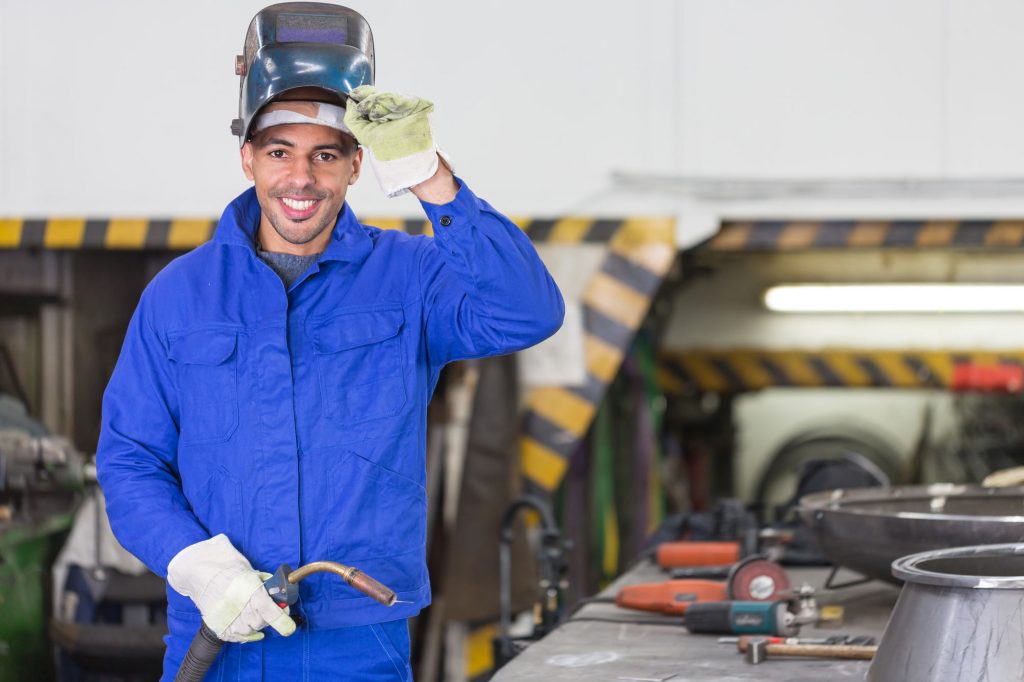Metal welding is a key component of many industries, including construction, manufacturing and mining, shipping, and even household. Even professionals can use the terms fabrication and welding interchangeably when working with metal. This can make it difficult to find the right company to do the job.
While there is some overlap between welding fabrication, these terms actually refer to two distinct processes. We will help you understand the differences and what skills fabricators and welders need to make a decision.
What is the difference between welding and fabrication?
Many people think welding and fabrication are the same. They involve using metal to make a variety of useful products. There are important differences between welding and fabrication. The skills and processes required for each differ.
Fabrication is the entire process of shaping and bending metal, as well as assembling them before joining. Metal fabrication is a skill that requires metalwork tools and additional skills.
Welding can be used to repair or join pipelines, but it is more precise and independent. You don’t always need to have fabrication skills. Welding is a method of joining pieces with strong bonds. This is especially important in cases where rivets and bolts are not feasible or appropriate.
There is often overlap, and many welders are able to fabricate. Many fabricators, however, can weld as part the fabrication process.
What is welding fabrication?
Welding fabrication, in simple terms, is the creation of projects from existing pieces. This involves cutting and shaping metal to be ready for assembly and welding. To ensure safe and efficient work, any professional involved in fabrication must adhere to AS/NZS ISO 3834 Quality Guidelines.
To shape metal to the correct size and shape for welding, a skilled fabricator employs a variety of metalworking techniques.
Casting
Cutting
Drawing
Folding
Forging
Stretching
Stamping
Extrusion
Shrinking
Machining
Punching
Die cutting
Finalization
Roll forming
Spinning
A fabricator might cut, roll and hammer sheet metal to exact specifications for car body repairs. A fabricator may heat a length or piece of metal to make a gate. Then, they will bend it around a jig so that the angle is perfect. Fabrication skills are required for cutting structural steel girders with an angle grinder.

The tools used for fabrication are usually more advanced and can be joined. They include welding clamps and adjustable wrenches as well as angle grinders, adjustable wrenches and shears.
Sydney Welders has a variety of welding skills and tools that can be used to complete simple or complicated projects.
What projects are most likely to require fabrication?
Fabrication can be used for many projects at home or in the workplace.
Casting
Machinery
Architectural metal
Gates
Handrails
Balustrades
Doors
Steel benches
Privacy screens
Front doors made of aluminium
Engine components
Parts for vehicles
Structural beams
Awnings and columns
Which types of welding are the most effective?
Fabricators usually use MIG or TIG welding to join the components of metal. Other methods, such as laser welding, oxy-acetylene and brazing, are also possible, but they are less common.
TIG Welding
TIG welding is gentler than other methods. It uses lower heat and is less likely to damage or deform metals. TIG welding often involves the use of a filler metal. This makes it more laborious, slow, and more difficult, but leaves clean, precise welds. TIG can be used to weld stainless steel and aluminum because of its lower temperature. It also leaves strong welds.
MIG Welding
MIG welding is faster than TIG welding, and requires less skill. MIG welding produces higher temperatures but is more likely damage the base metal. It is also less precise and neater if it is performed by an experienced professional. MIG welding employs a continuous-feed electrode which allows for more consistent welds.
What is Fabrication for Stainless Steel and Aluminium?
Although welding with mild steel is a common task, stainless steel or aluminium are becoming more popular. These metals can be used for a variety of products, including elegant railings, kitchen equipment, and boats and infrastructure.
Although they have unique properties, stainless steel and aluminium can be difficult to weld. To prevent the metal from forming, and to avoid it being burned with the torch, welders require a different set if skills.
Both of these metals require a skilled welder or fabricator, who can properly prepare the metal and join it without causing any damage.
Fabrication of stainless steel
Although stainless steel is strong, it can also be bent, machined, and folded. It can also quickly transfer heat, which can cause deformation or burn-through. Because stainless steel has a high resistance to corrosion, and a beautiful appearance, welders must avoid damaging the surface of the steel or leaving carbon steel fragments that attract rusting.
Aluminium fabrication
Aluminium is light, corrosion-resistant and easy to work with. It’s ideal for vehicles, decorative features, food preparation, and structural work. The fabrication process can cause damage to the metal. It can also be easily melted during welding.
Conclusion
Sydney Welders is a leading professional and experienced welding company in Sydney. Only time-served, fully certified welders are used. They know how to complete projects with different metals and do so on time.
We can help you with any type of fabrication project, including gates and railings at your home or pressure boilers and kitchen equipment at the office.
Our mobile welders are equipped with all the necessary tools and the skills to make sure everything runs smoothly on-site. We can assist you with any type of steel, stainless steel or aluminium fabrication in Sydney.

